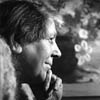Your shopping cart is empty!
Select currency
MENU

From an early age Winifred Nicholson was encouraged to paint. Her grandfather was George Howard, ninth earl of Carlisle, a self-taught painter and friend of the Pre-Raphaelites - or more specifically with those in the later phases of the movement, Edward Burne-Jones and William Morris. But her parents, Charles Henry Roberts, a Liberal MP in Oxford where Winifred Nicholson was born, and Lady Cecilia Maude, also encouraged their child’s early interest in painting.
Winifred Nicholson did more formal art studies at Byam Shaw School of Art in London (c.1910-14 and 1918-19) where John Byam Shaw, the principle, was also an admirer of the Pre-Raphaelites – particularly for their richness of colour. But Byam Shaw also taught a strict academic draughtsmanship, and sometimes Winifred Nicholson experienced a tension between an appreciation of colour on the one hand, and the need, on the other, to confine such colour within the draughtsman’s line. One anecdote she liked to tell about her teacher sums up the ways in which she eventually managed to resolve this tension: ‘I painted...the rainbow sheen on a mother-of-pearl shell – ‘’You are seeing too many colours…’’ said Mr. Shaw’.* And seeing ‘too many colours’ was, of course, precisely what Winifred Nicholson continued to do for the rest of her painting career.
Just after her schooling she met the painter Ben Nicholson, whom she married (1920), and with whom, for the next eighteen years, she would form a mutually influential partnership – both in marital and artistic terms. They had two sons and a daughter, and moved to Bankshead, a stone farmhouse near Brampton, Cumberland, which Winifred bought, and which would become home for the rest of her life. Here she created a garden where she encouraged wild flowers; and the painting of these flowers, their translucent colours, often in the foreground, or on a window ledge with landscape in the far distance, became her central motif and content.
It is true that she departed from these largely representational pictures to briefly experiment with abstraction. The marriage with Ben Nicholson did not last and was formally dissolved in 1938, and they lived apart from 1931 when Ben met Barbara Hepworth, and when Winifred Nicholson departed for Paris where she would live for half of each year (from 1932-1938). Here her works still strongly evidenced an interest in colour, but she also explores abstraction. Ben’s breakthrough works from this time – his white reliefs – celebrate a pure abstraction but have cleansed themselves of colour; Winifred Nicholson experiments with elliptical shapes, upward-opening arcs and gradations of light, but she does not dispense with colour - she explores the richness of colours all the more intensively in her abstract works of this period.
Both Winifred and Ben Nicholson exhibited together at the Beaux Arts Gallery, London (1923) and two years later at the Mayer Gallery - an exhibition which resulted in election to the Seven and Five Society. At this point she became friends with Christopher Wood, and indeed shared an exhibition with him at the Beaux Arts Gallery (1927). Whilst in the process of hanging the paintings for this exhibition Winifred Nicholson stepped backwards through an open trapdoor and fell to the floor below. Recovery looked doubtful, but she found health, in time to visit the exhibition before it ended, through the help of a Christian Science practitioner - help which influenced Winifred greatly, and led to her becoming an ardent Christian Scientist from this point on in her life.
Colour was what Winifred Nicholson was most praised for in her paintings for these exhibitions. She published her ideas on colour theory in an essay entitled ‘Unknown Colour’ (in ‘Circle: An International Survey of Constructive Art’ Ed. N. Garbo; 1937). In this she argued that colour was not tied down to form, but instead somehow transcended it. And certainly, on viewing many of Winifred Nicholson’s paintings, colour seems triumphant. Her paintings are very much more than simple depictions of flowers: their colour gets at something quintessential, and it was this quintessence that Winifred Nicholson sought, above all else, to achieve.
* ‘Unknown Colour: Paintings, Letters, Writings by Winifred Nicholson’, compiled by Andrew Nicholson, Faber and Faber, London, 1987. Also quoted in ‘Winifred Nicholson’, Christopher Andreae (p44).
Tate Gallery, London; Kettle’s Yard, Cambridge; Manchester Art Gallery, Manchester; Aberdean Art Gallery amd Museums, Aberdeen; etc.
This is a Limited Edition Giclee Print by the artist Winifred Nicholson 505mm x 505mm ..
£195.00 Ex Tax: £162.50
This is a Limited Edition Giclee Print by the artist Winifred Nicholson 500mm x 500mm ..
£195.00 Ex Tax: £162.50